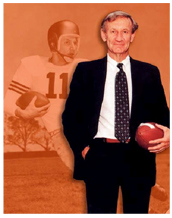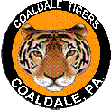It was an early summer afternoon in Coaldale in 1951 and the young lad, age 5, struggled with the armload of empty soda bottles as he brought them back to Harold’s Corner Store to be recycled. Now before you start to laud the boy for being ecologically minded at such an early age so long ago, understand that his motives were much more financially motivated. A few days earlier those bottles contained Ma’s Cream Soda, Foster’s Birch Beer, and perhaps a Postie’s Orange, but soon they will be returned for a 2-cent deposit on each. This would then become a small brown bag of sugary treats which he hoped to finish before his parents came home and found out why he “spoiled his supper”.
For the younger readers, the Corner Store’s closest current example is a 7-11, Wawa, Royal Farm, or Turkey Hill convenience store. In fact, if you cut the store down to one-fourth the size; turn off all but about 3 lights; add some semi-legal games of chance; and completely ignore all current Health Department regulations, then you have an idea of the type of establishment found in all Panther Valley towns. They were outnumbered only by the number of bars and saloons. Technically Harold’s wasn’t on a corner though. It sat along Fourth Street between Ridge and Ruddle Streets and right across from the old Middle Ward School.
We kids were fierce about protecting our ‘turf’ when it came to the local store. Owners Harold and Rosie Herring were not what you might call warm and loving about the parade of kids running through the place every day, but even if we gave them some grief, don’t you come into the store from another neighborhood and expect us to let you get away with causing trouble. Arguably the best example of the Corner Store in Coaldale was Henry Plocinik’s at Second and Philip Streets. Henry had the typical small market in front with dairy, meats, and produce but featured a back room with a pool table, jukebox, and several pinball machines. Anybody who attended Marian High School when it was split among three towns probably spent many hours one block away from the school in Henry’s back room while waiting for the bus.
But let’s get back to the young lad mentioned at the beginning of this article. While Harold counted out the 12 cents owed for the bottle return, the boy pressed his nose against the sticky fingerprint and snot-covered glass of the candy display case and did some quick calculations on how many Mary Jane’s, Bazooka Joe’s, Hershey Bars, and/or Necco Wafers he could get with the money. Suddenly the voice of an older boy called to him from across the store. Quite a bit older in fact. He was in his late teens, just graduated from Coaldale High School, and already a sports legend in the town. One of the recent inductees to the College Football Hall of Fame, George Welsh beckoned to the boy to bring his 12 cents over to him for a chance at making some real money.
It was then that George Welsh introduced me to the big wooden box, which stood  in the front corner of the store. George explained to me that it was called a pinball machine and it was a game of skill that had the potential for great rewards. I was so small that he had to drag over a chair for me to stand on to actually see the playing field. Unlike most modern machines, this one had no flippers, bells, gongs, or other sound effects. In fact, it really had no moving parts, except for the two plungers. One loaded the ball into the slot and the other fired the ball into the playing field. The field consisted to numerous static bumpers, 25 holes numbered consecutively, and a hole at the bottom that returned to ball to be replayed if it missed all the numbered holes. On the glass panel at the top of the machine was a 5 by 5 matrix of corresponding numbers, resembling a Bingo card.
in the front corner of the store. George explained to me that it was called a pinball machine and it was a game of skill that had the potential for great rewards. I was so small that he had to drag over a chair for me to stand on to actually see the playing field. Unlike most modern machines, this one had no flippers, bells, gongs, or other sound effects. In fact, it really had no moving parts, except for the two plungers. One loaded the ball into the slot and the other fired the ball into the playing field. The field consisted to numerous static bumpers, 25 holes numbered consecutively, and a hole at the bottom that returned to ball to be replayed if it missed all the numbered holes. On the glass panel at the top of the machine was a 5 by 5 matrix of corresponding numbers, resembling a Bingo card.
The object was also similar to Bingo. Get 3 in a row; horizontally, vertically, or diagonally, and you win 5 extra games. Do the same with 4 in a row and you get 25 extra games. And for the ultimate, get 5 in a row and it becomes 100 extra games! George went on to explain that one of my newly acquired nickels would buy us 5 balls to attempt this feat. These extra games could simply be played off, but George further explained that Harold is willing to ‘buy back’ those extra games at face value of 5 cents each. Therefore, when we get those 5 balls to line up in a row, our reward, at 5 cents per, will be $5.00! Of course George said we would split the winnings 50/50.
I was in no position to argue with George, and frankly the thought of sudden  riches and fame, thanks to a Coaldale legend was irresistible. While I stood on the chair, George got behind me and showed me where to drop in the nickel. Suddenly the machine came alive with lights and the 5 balls from the previous game dropped through the openings in each numbered hole. George had me push the plunger that loaded the first ball into position. He fired the first ball into the field and while I had my hands on the front edge of the machine, George got behind me and put his hands on the corners. He occasionally gave the machine a little ‘juke’ to help move the ball where he wanted as it hit the static bumpers. He explained that it was critical to have the right touch when it came to ‘juking’ because you never want to anger the tilt monster inside the machine. Doing this would suddenly shut down the machine and leave you with nothing.
riches and fame, thanks to a Coaldale legend was irresistible. While I stood on the chair, George got behind me and showed me where to drop in the nickel. Suddenly the machine came alive with lights and the 5 balls from the previous game dropped through the openings in each numbered hole. George had me push the plunger that loaded the first ball into position. He fired the first ball into the field and while I had my hands on the front edge of the machine, George got behind me and put his hands on the corners. He occasionally gave the machine a little ‘juke’ to help move the ball where he wanted as it hit the static bumpers. He explained that it was critical to have the right touch when it came to ‘juking’ because you never want to anger the tilt monster inside the machine. Doing this would suddenly shut down the machine and leave you with nothing.
Five balls later we still didn’t have even 3 in a row, but George promised that now that I have a better understanding of the game, the next nickel will bring us riches. Once again I rolled the nickel into the slot and 2 minutes later George explained that in life “Sometimes you eat the bear and sometimes the bear eats you”. Speaking of eating, I was now down to just 2 cents from my original 12 cents and the candy choices became very limited. However I still had a big smile on my face because just having a ‘big kid’ even speak to you was monumental at age 5. But to have one actually take the time to coach you in the fine art of ‘pinball wizardry’ was practically unheard of.
I went on for years feeding Harold’s machines with my nickels, and got pretty good with my technique. For one thing, I did learn to control the tilt monster. The machines got more sophisticated. Powered bumpers, flippers, and flashing lights and sounds made the game more stimulating. I won my fair share of games on them, but still occasionally went back to the old machine that got me started. Once I actually did get 4 in a row, however the big one – 5 in a row - eluded me.
Fortunately George Welsh recognized that making a career out of pinball machines was probably not a wise move. However, the idea of taking an inexperienced young lad, and showing him the proper techniques and discipline to master a skill…such as football… might be a plan for the future.

